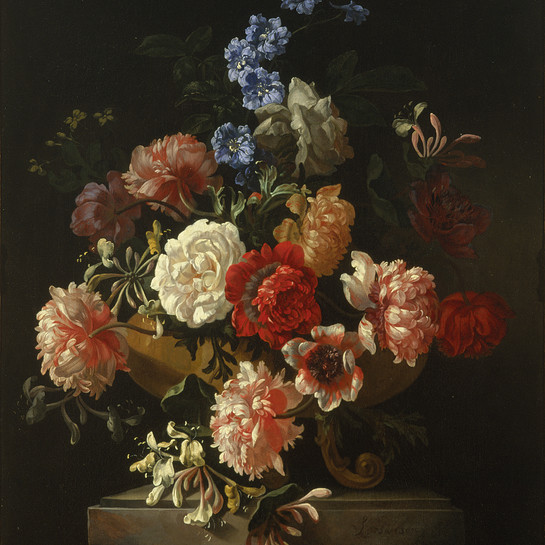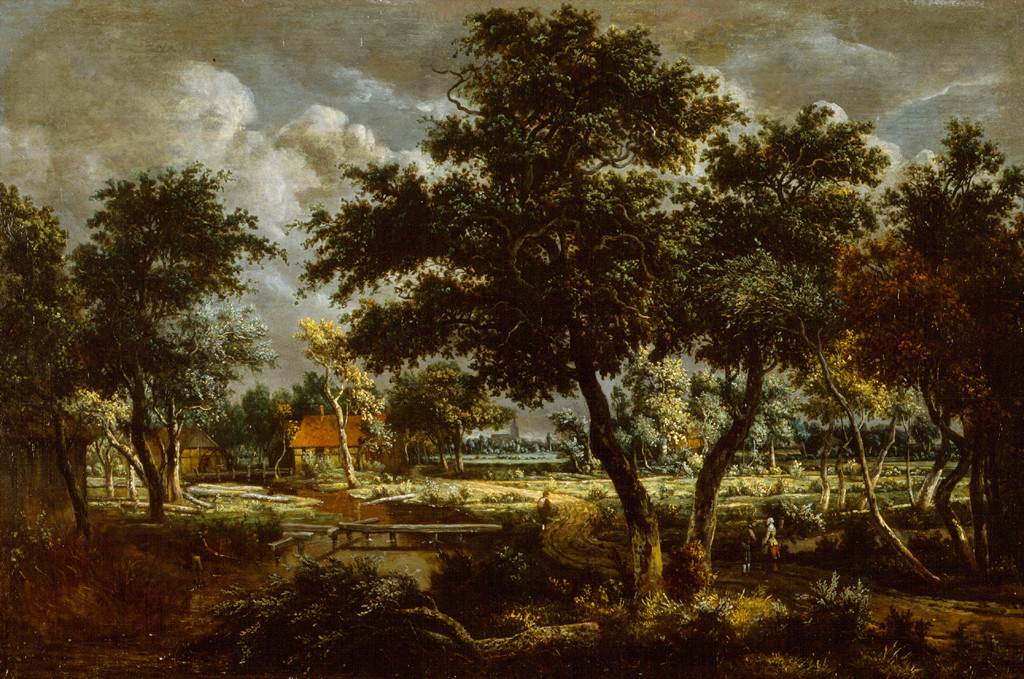Gottfried Lindauer
b.1839, d.1926
King Tāwhiao Tūkāroto Matutaera Pōtatau Te Wherowhero (Ngāti Mahuta, Tainui)
- c. 1885
- Oil on canvas
- Gift of Harriett and Archibald Anthony, 1964
- 740 x 640 x 45mm
- 69/541
Location: Dame Louise Henderson Gallery
Tags: academicism, cloaks, earrings (jewelry), jades (objects), jewelry, koru (pattern), Māori (culture or style), men (male humans), moko, people (agents), portraits, pounamu, spirals (geometric figures), tattoos, warriors
“Ki te kotahi te kākaho ka whati, ki te kāpuia, e kore e whati.” —King Tāwhiao [If there is but one toetoe stem it will break, but if they are together in a bundle they will never break.] While in Sydney in 1884, en route to England, King Tāwhiao had his photograph taken by Henry King. Vienna-trained, Bohemia-born painter Gottfried Lindauer obtained a copy in Aotearoa New Zealand and that became the source for this portrait.Tāwhiao’s kaupapa (intention) was to meet Queen Victoria, gain recognition of the Treaty of Waitangi, and redress the injustice of vast confiscations of Māori land – he was blocked, however, from seeing her.
(Te Wheke, 2020)
Exhibition History
He Waka Eke Noa, 18 February 2017 – 18 February 2018
The Vienna-trained, Bohemian-born artist Gottfried Lindauer arrived in New Zealand in 1874, and became famous for his portraits of eminent Māori. Lindauer painted several portraits of Tūkaroto Matutaera Pōtatau Te Wherowhero Tāwhiao (c. 1825–1894), the second Māori king, based on photographs by others. This painting is based on a studio portrait taken in 1884 by Australian photographer Henry King, during King Tāwhiao’s visit to Sydney while en route to England. Tāwhiao’s goal was to meet with and gain recognition from Queen Victoria of the Treaty of Waitangi and to redress the injustice of vast confiscations of Māori land, but did not meet with success.
Treasury: A Generous Legacy, 18 December 2015 – 27 November 2016
The Vienna-trained, Bohemian-born artist Gottfried Lindauer arrived in New Zealand in 1874. He based this portrait of Tūkaroto Matutaera Pōtatau Te Wherowhero Tawhiao (c. 1825–1894), the second Māori king, on an 1884 portrait by Sydney photographer Henry King. Tawhiao visited King ’s studio while en route to England in pursuit of recognition from Queen Victoria of the Treaty of Waitangi and reparation of confiscated Māori land.
Tawhiao’s portrait was given to the Gallery in 1964 by Lindauer’s nephew, Archibald H. Anthony (1881–1970), in honour of his wife Harriet Grace (d. 1961). Anthony was a retired Christchurch lawyer who also gave his large property on the Cashmere hills to become a Hohepa Home for children with disabilities.
During the time that Czechoslovakian born artist Gottfried Lindauer lived in New Zealand, after 1876, he worked mainly as a portrait painter. Some subjects were painted directly from life while others were painted from photographs. Lindauer used photography as an aide-memoire. Often his subjects exhibit, as in this portrait, a noble bearing, and were chiefs recognised for their achievements by both Maori and non-Maori alike.
The subject of this work, King Tawhaio Potatau Wherowhero, was the first Maori King, declared King on the death of his father Chief Te Wherowhero.
Tawhaio was a chief of considerable mana who fought in the Waikato land wars after which he retired to the King Country, where, with a number of other chiefs, he lived in relative isolation until 1881. In 1884, he visited England with other chiefs, hoping to form a marriage alliance with Queen Victoria. He died in 1894.
Lindauer was an accomplished draughtsman and took great care in depicting Maori garments, ornaments, and weapons accurately, striving for a faithful, unromanticised record of his subject as in this work. (Label date unknown)
King Tawhiao was a Mâori chief of considerable importance who, in 1884, had led a deputation to England to appeal to Queen Victoria about honouring the Treaty of Waitangi. The kiwi feather cloak, the white huia feathers in his hair and the greenstone earring show him to be a warrior of great mana (standing). Gottfried Lindauer has created a grand portrait of power and command in the academic style, painted in a highly realist manner. Lindauer’s precise style of painting was greatly valued by his contemporaries as ethnological and historical records of the Mâori people. Born in Bohemia, in 1855 Lindauer travelled to Vienna to study painting and in 1864 returned to his hometown of Pilsen, establishing his own studio. Lindauer arrived in New Zealand in 1874. The following year he moved to Auckland. In the 1880s Lindauer associated with photographer Samuel Carnell who specialised in Mâori subjects. ‘The Colonial and Indian Exhibition’ in London, in 1886, included twelve of Lindauer’s works. (Label date unknown)

















